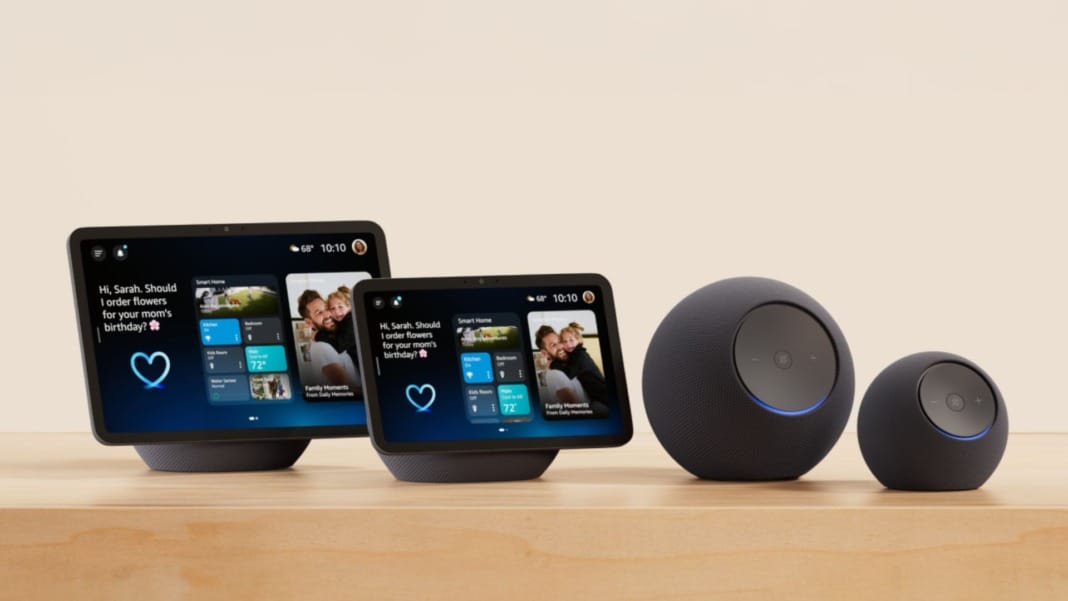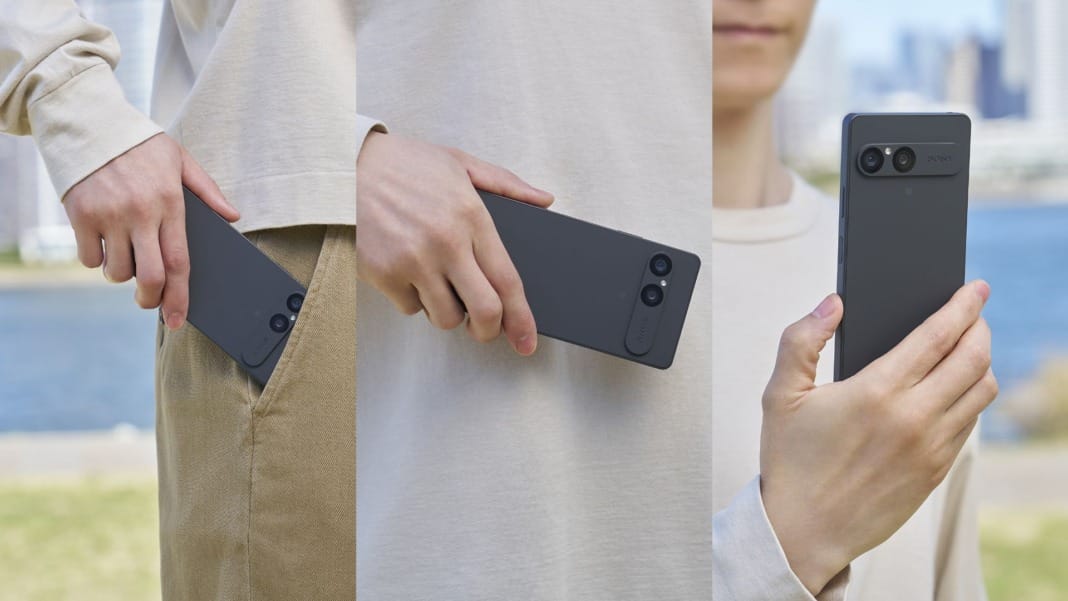Amazon has unveiled a new generation of Echo devices, designed to showcase Alexa+, its enhanced AI assistant, which aims to make conversations more natural and intuitive. The new range includes the Echo Dot Max, Echo Studio, Echo Show 8, and Echo Show 11, each redesigned with upgraded hardware to support more advanced features.
Smarter conversations with Alexa+
Alexa+ marks a significant step forward in the way Amazon’s assistant interacts with users. Instead of responding only to fixed commands, Alexa+ can now interpret natural phrasing and context. For example, a request such as “make it darker in here” will dim the lights without the need to specify a room.
Amazon says the assistant is becoming more conversational and proactive, allowing users to complete increasingly complex tasks, from managing schedules to controlling connected devices around the home. The new voice is also described as more fluid and human-like than earlier versions.
Every new Echo device will ship with Alexa+ enabled, making it the standard experience for users in the future. The system is powered by a new custom silicon platform and an advanced sensor fusion system called Omnisense, which enables the devices to understand user intent better and adapt to various contexts.
The new Echo lineup
The refreshed Echo family has been designed to highlight Alexa+ capabilities. Each device features faster processors, increased memory, and enhanced sensors to support Amazon’s vision of ambient AI.
Amazon’s new AZ3 chip powers the Echo Dot Max, while the Echo Studio, Echo Show 8, and Echo Show 11 use the AZ3 Pro. These processors feature built-in AI accelerators, offering improved microphone performance, faster response times, and smoother overall operation.
The Echo Dot Max introduces a dual-driver, two-way speaker system with a woofer and tweeter built directly into the device housing. This integration doubles the internal air space, producing richer sound with up to three times the bass of the 5th-generation Echo Dot.
The larger Echo Studio features a high-excursion woofer and three full-range drivers, designed to deliver deep, immersive sound. With support for spatial audio and Dolby Atmos, it offers a room-filling listening experience in an enclosure that is 40% smaller than the original model. Both the Echo Dot Max and Echo Studio can be paired for stereo or surround sound setups and linked with Fire TV sticks for a home theatre system.
The Echo Show 8 and Echo Show 11 feature 8-inch and 11-inch touchscreens, respectively. Both displays use in-cell touch technology and a negative liquid crystal design to improve viewing angles. They are equipped with front-facing stereo speakers and a custom woofer positioned under the display, directing sound towards the user.
For video calls, both devices feature a 13MP camera that performs well even in low-light conditions. Alexa+ also enables more visual interactions, such as viewing photo slideshows, managing colour-coded family calendars, or receiving summarised Ring video updates.
Challenges and competition
While the new lineup offers promising improvements, some limitations remain. Certain features, including app integrations and the option to brainstorm gift ideas, are not yet available at launch. Alexa+ will be free for Prime members, but others will need a paid subscription, which could affect adoption.
Not all older Echo models are compatible with Alexa+, leaving some users on the legacy version. Privacy concerns also remain as Alexa+ becomes more proactive in anticipating user needs.
Despite these challenges, Amazon is positioning Alexa+ as a major leap in the smart home race. With stronger AI, more natural conversations, and improved sound quality, the company aims to establish itself as the leading smart assistant.
All four Echo devices are available to pre-order in the United States, where customers will receive Alexa+ Early Access with any purchase. Prices are set at S$128.67 for the Echo Dot Max, S$283.09 for the Echo Studio, S$231.61 for the Echo Show 8, and S$283.09 for the Echo Show 11.





